History
Hellabrunn – Milestones in our history
Hellabrunn – Milestones in our history
Founded in 1911, Hellabrunn Zoo has a rich history extending over 100 years. During this period, the unique paradisiacal site situated in a conservation area on the banks of the Isar river has evolved into a world-class zoological garden. Here’s a look at some of the important milestones that have made Hellabrunn what it is today - a fascinating world of nature with ultra-modern enclosures that offers unforgettable encounters with the animal.
On 25 February 1905, the Zoologischer Garten München e.V. (Zoological Society of Munich) was founded with the aim of building a new zoo in Munich.
On 1 August 1911, Hellabrunn Zoo opens its gates to the public for the first time. The bold Master Plan involves use of the site’s slope terrain with rocky mound and its meadow landscape traversed by the Auer Mühlbach river to create a nature-inspired zoo environment.
The Pachyderm House opens. Designed by the prominent architect Emanuel von Seidl, the building which was subsequently called the Tropical House (one of the few heated houses at Hellabrunn until 1973) and is now known as the Elephant House, is still standing today. The newly renovated edifice is currently one of the finest elephant houses in Europe.
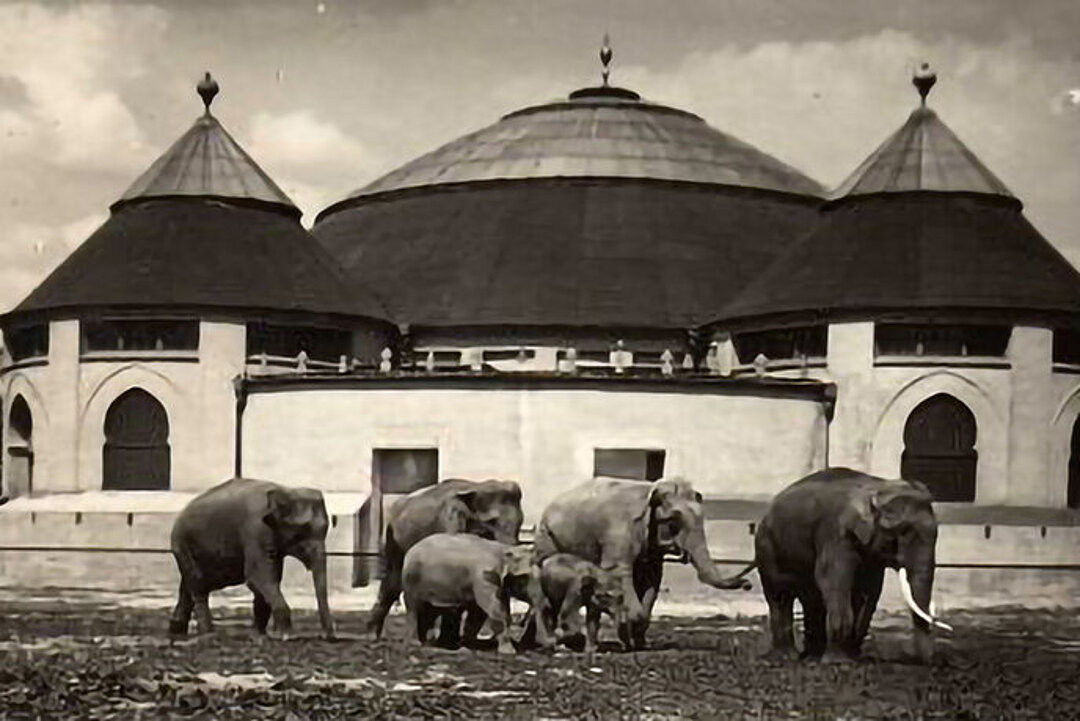
In the early 1920s, Germany was severely impacted by hyperinflation. As a result, the zoo was temporarily closed due to lack of funding
A zoo committee is founded under the Advocates for Munich Residents programme, which kick starts the rehabilitation of the zoo.
On 23 May 1928, the zoo reopens as Münchener Tierpark Hellabrunn AG. Inspired by Carl Hagenbeck, zoo director Heinz Heck redesigns the layout of the site to create the first geo-zoo in the world, in which species enclosures are arranged according to geographical origin.
The zoo is forced to cease operations due to ongoing air raids.
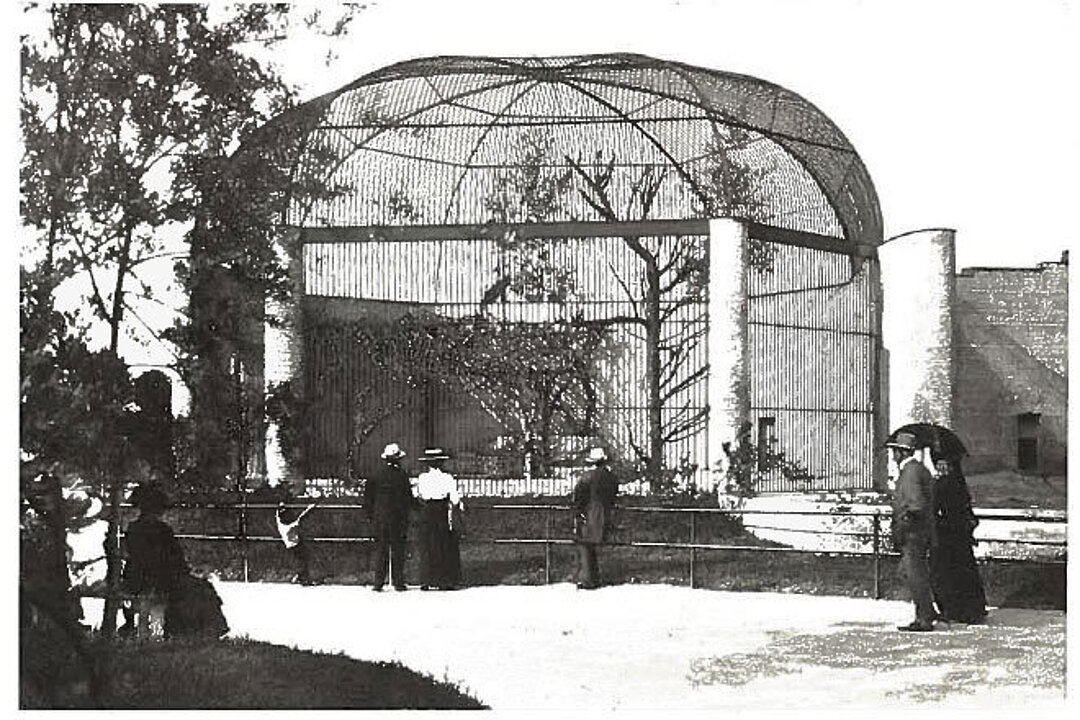
During the Second World War, the zoo suffered heavy bomb damage and many animals fell victim to the air raids. Despite this, the zoo is able to reopen in mid-May 1945. The temporary restorations carried out remain in place for an extended period of time as no money would be available for new buildings for years to come.
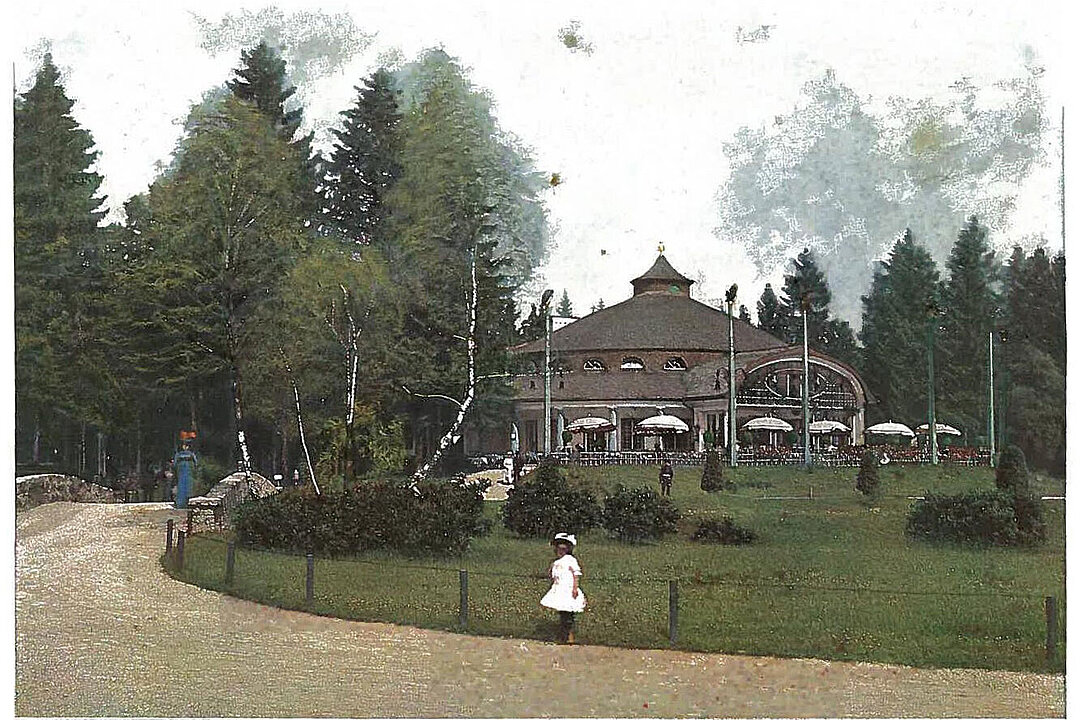
Helmut Horten donates over one million Deutschmarks to the zoo. The funding goes towards building facilities for wild goats, wild sheep, a wolf enclosure and an exhibition pavilion.
The architect Jörg Gribl begins work on the General Expansion Plan for the modernisation of the zoo. The renovation is carried out step by step and sees almost all enclosures revamped. Under this 1970s plan, the Ape House was renovated and a new outdoor enclosure for the gibbons built.
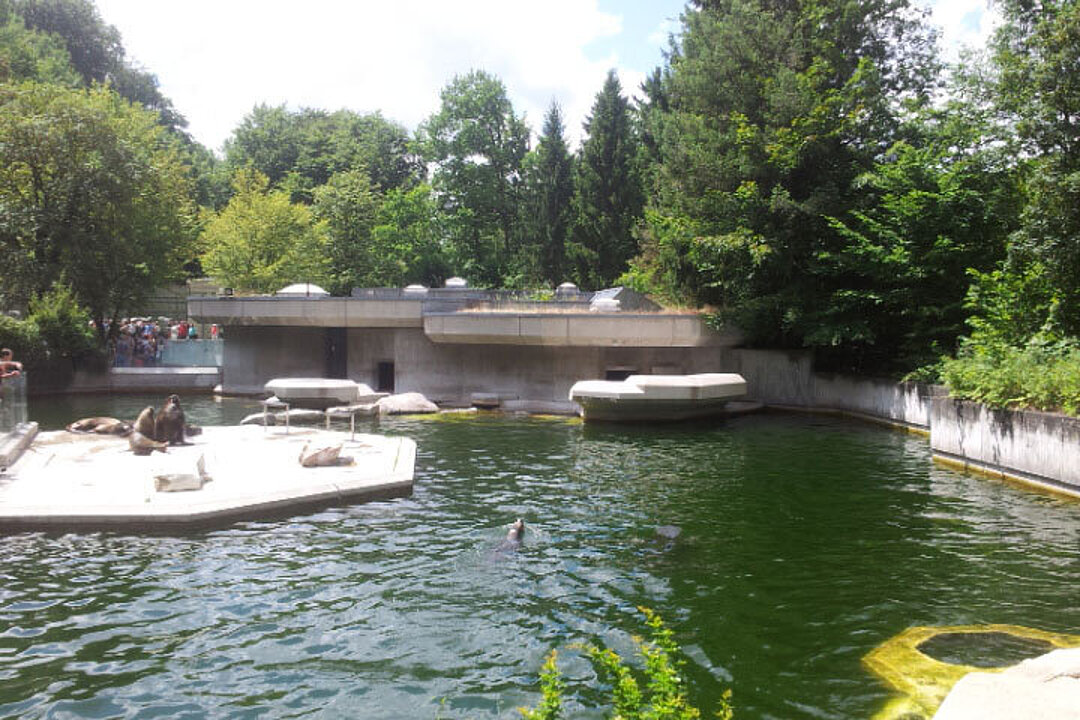
The Polarium opens to the public. The new facility offers penguins, polar bears and seals a new home, as well as musk oxen. The new Children's Zoo with petting area quickly becomes a popular attraction for young animal lovers and parents alike.
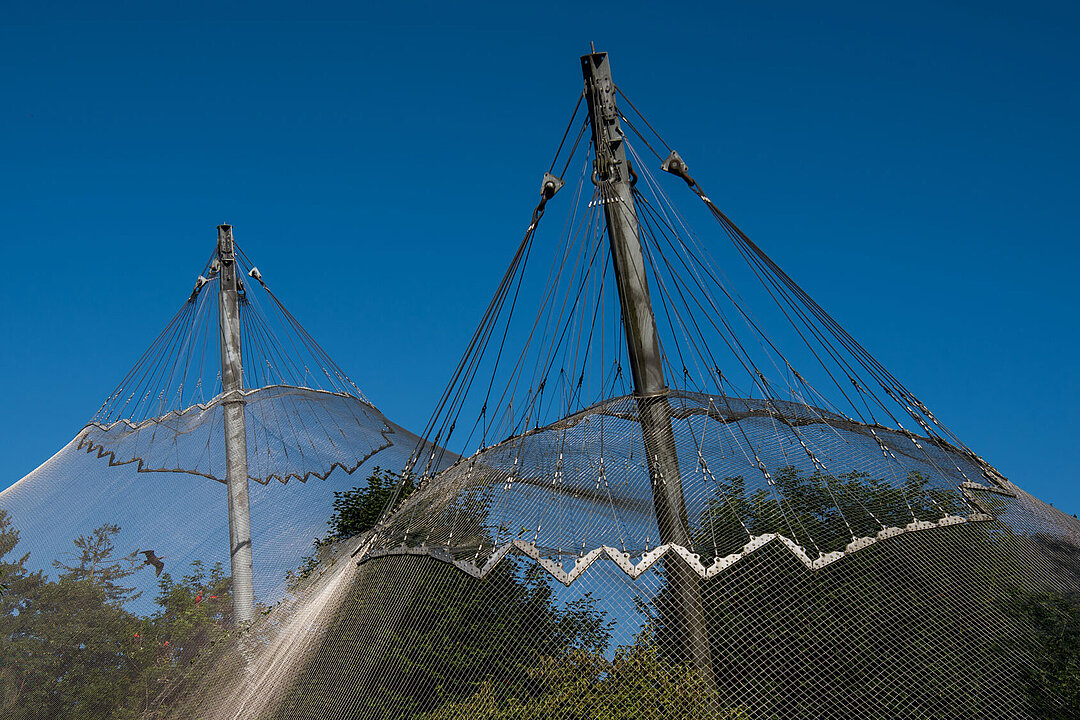
The construction of the new aviary is completed. The visionary architectural achievement stands 18 m high and features a state-of-the-art stainless steel mesh canopy that spans an area of 5,000 m². Designed by Jörg Gribl, in collaboration with Frei Otto, the extensive aviary at Hellabrunn sets standards for sustainable zoo architecture, even today.
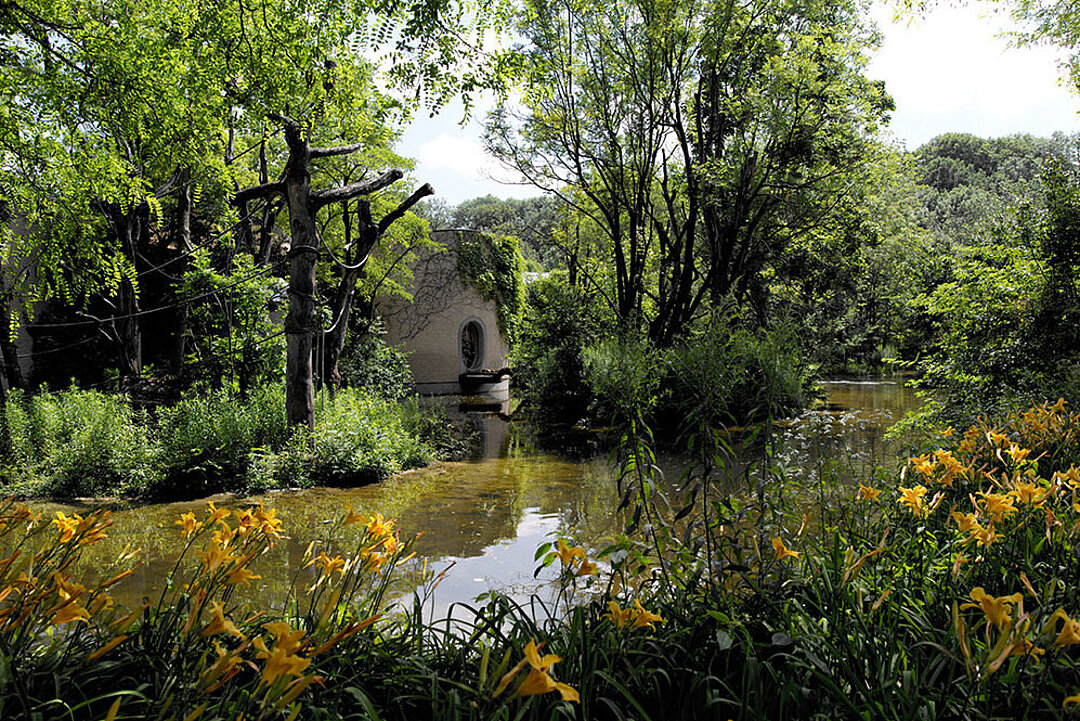
The Monkey House is expanded to include enclosures for lemurs, New World monkeys and siamang, according to plans by architect Jörg Gribl. Today the house is now known as the World of Small Monkeys.
The new enclosure for rhinos and tapirs is completed. It represents architect Herbert Kochta’s first project for the zoo.
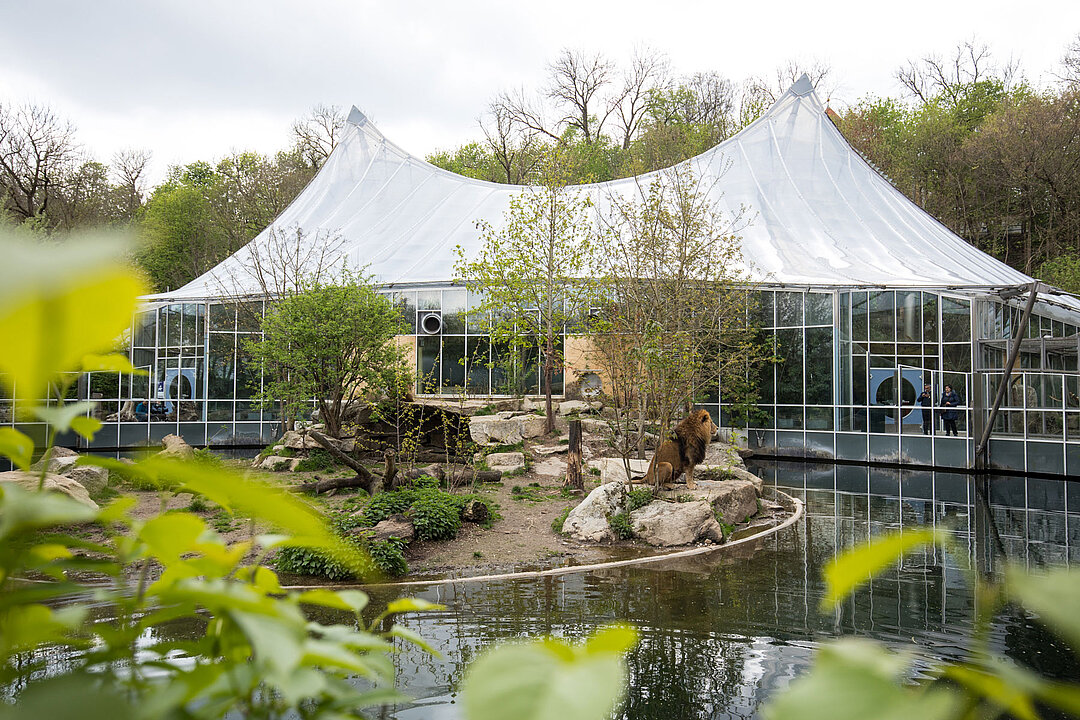
The newly opened Jungle House for big cats becomes another popular attraction at the zoo. The tent-like roof features a cable net canopy cladded with pressurised foil air cushions.
The Tortoise House with insectarium offers a new attraction at Hellabrunn.
The zoo celebrates the opening of the Jungle Pavilion. Designed by Herbert Kochta, it provides a home for chimpanzees, gorillas and American alligators, as well as several reptile and fish species.

The new Orangutan Paradise opens for visitors and features spacious indoor and outdoor enclosures.

The opening of the Hellabrunn Species Conservation Center. The building has since been renovated in 2015 and now offers a fascinating permanent exhibition on biodiversity.
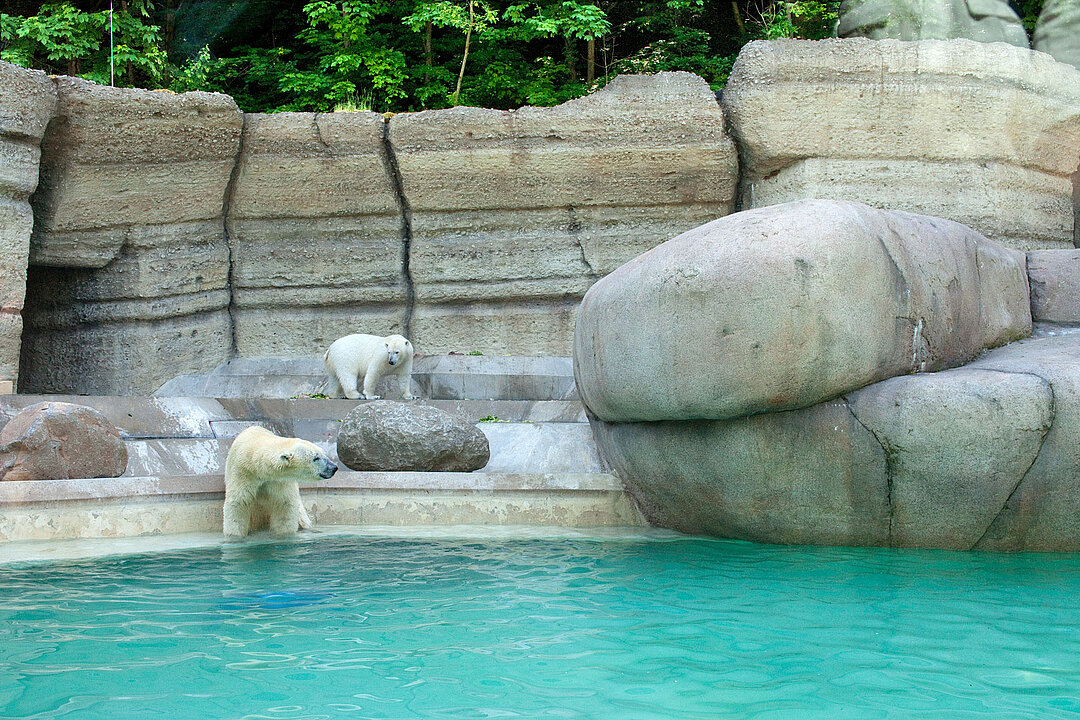
The new polar bear enclosure is completed. The redesign increases the habitat size to 2,800 m², almost quadrupling the previous total area. New features include a diving pool with underwater view that allows visitors to observe the polar bears swimming and diving.
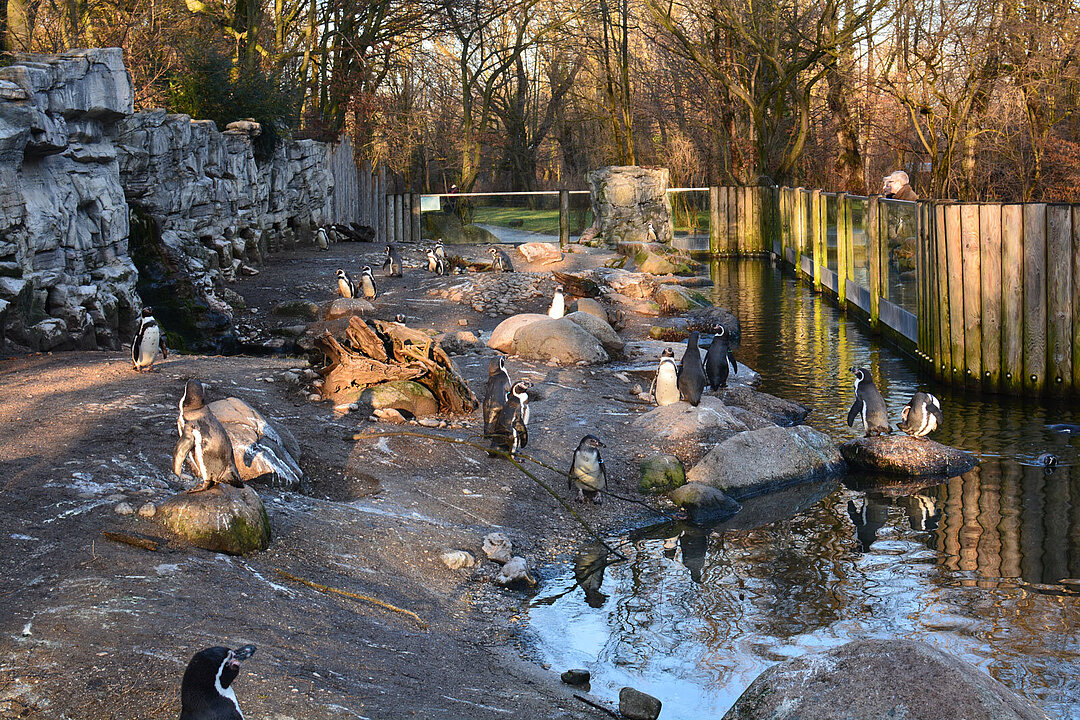
The Humboldt penguins are relocated to a newly designed enclosure built on the site of the former Eurasian otter enclosure. The penguins' new home features rocky landscape and waterfall covering an area of 350 m², offering the perfect conditions for the birds.
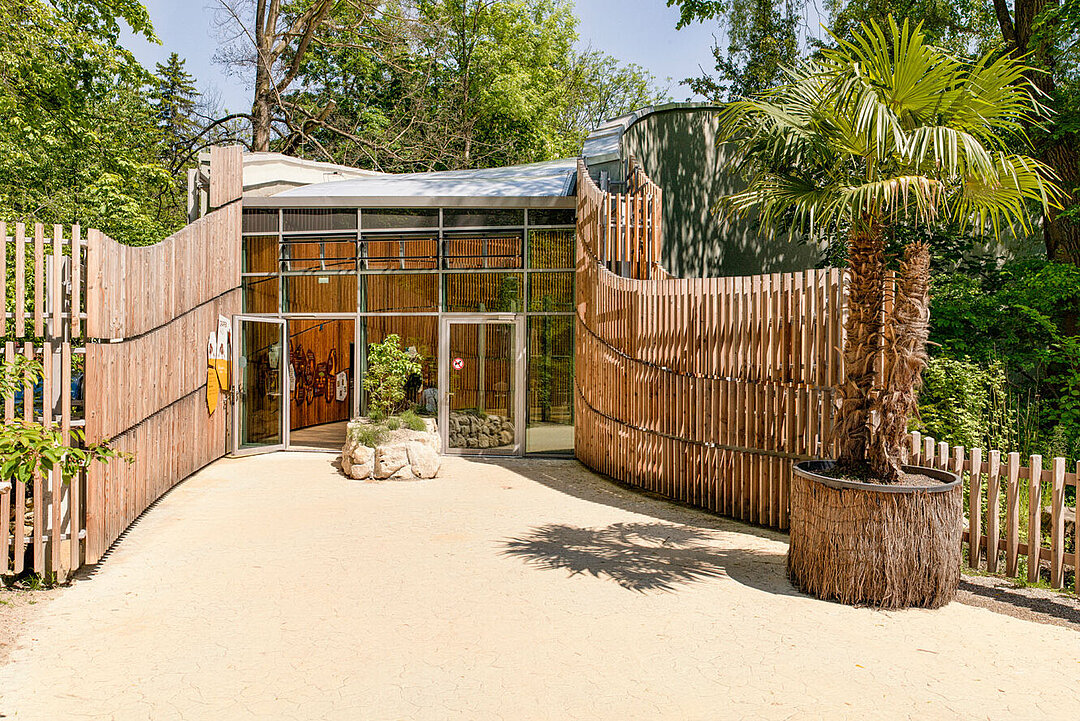
The 10,000 m² Giraffe Savannah with the 770 m² Giraffe House opens to the public. It features a two-storey viewing platform that offers visitors fascinating views of the African savannah landscape and its majestic animals.
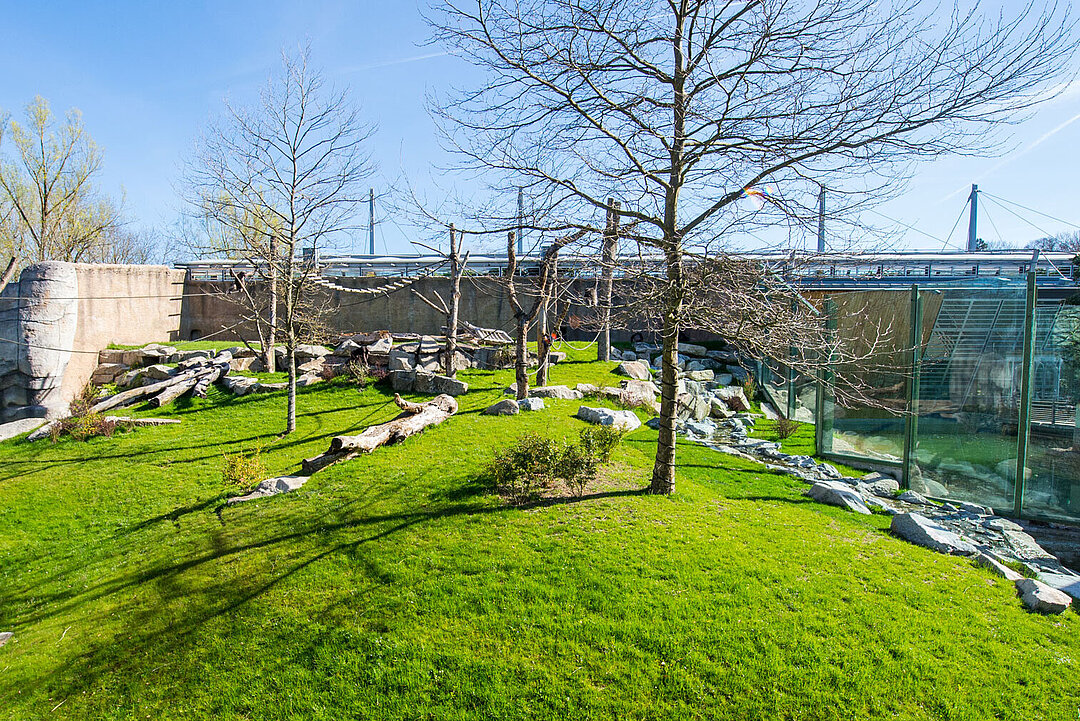
The completely revamped enclosure with natural climbing trees, stream and rocks opens to the public. The indoor enclosures in the Jungle Pavilion have also been renovated.
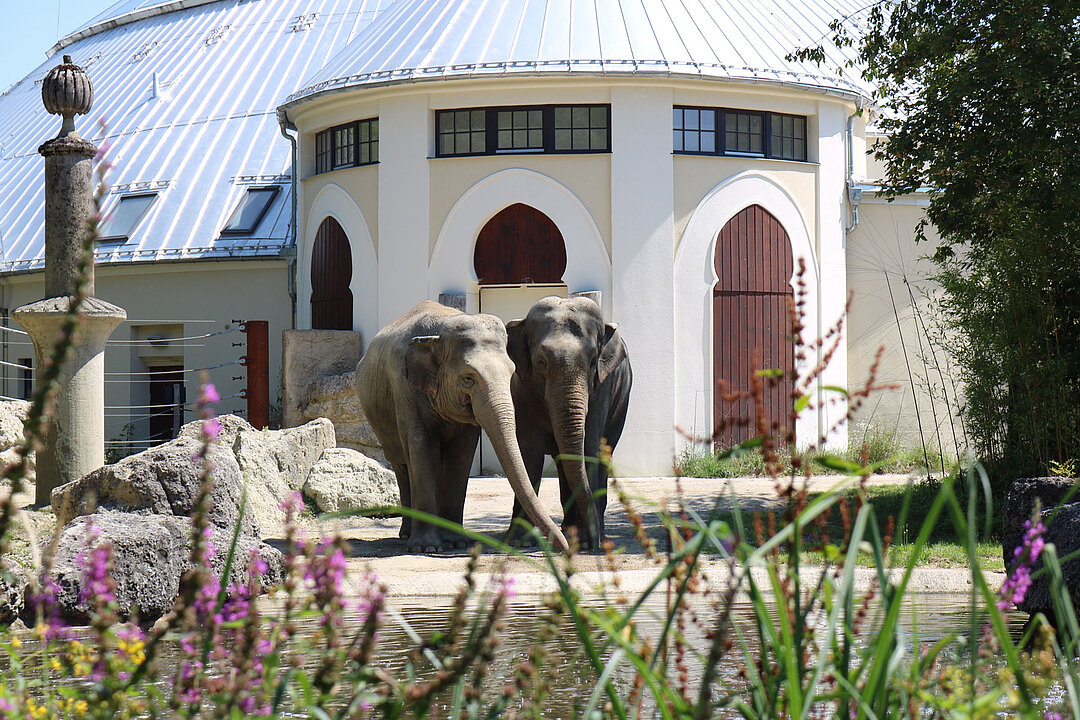
The Elephant House reopens after extensive renovation.
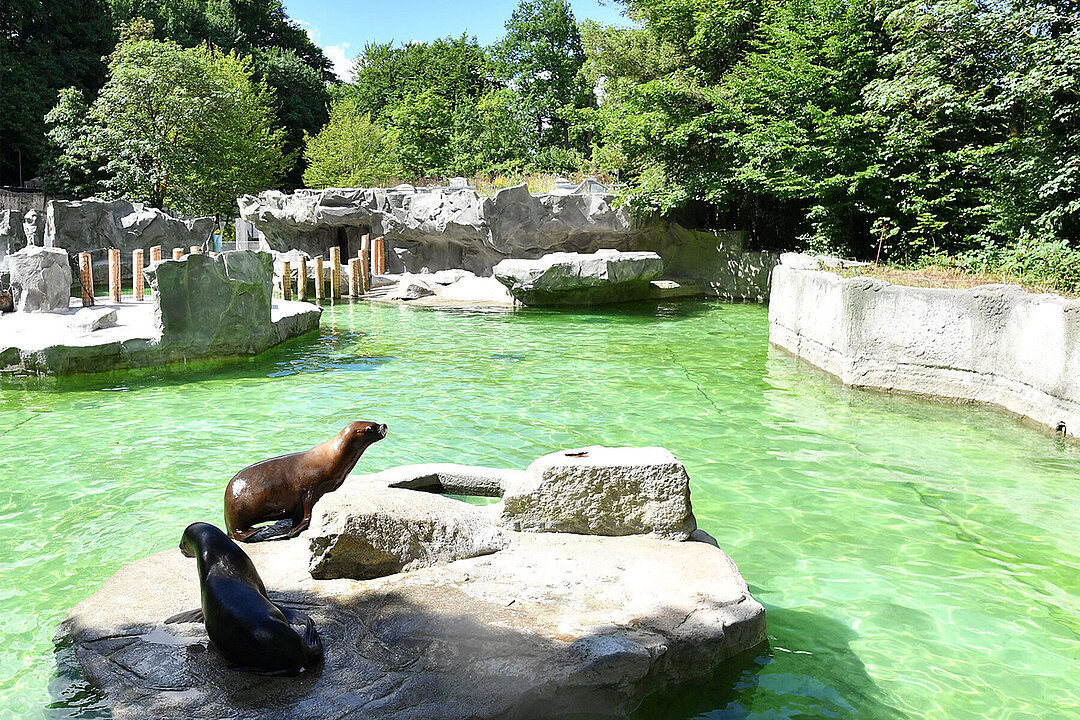
The Polar World reopens after a complete renovation and the addition of new enclosures for the South American sea lions, Arctic foxes, mountain hares and snowy owls, representing an important milestone in the Hellabrunn Master Plan.
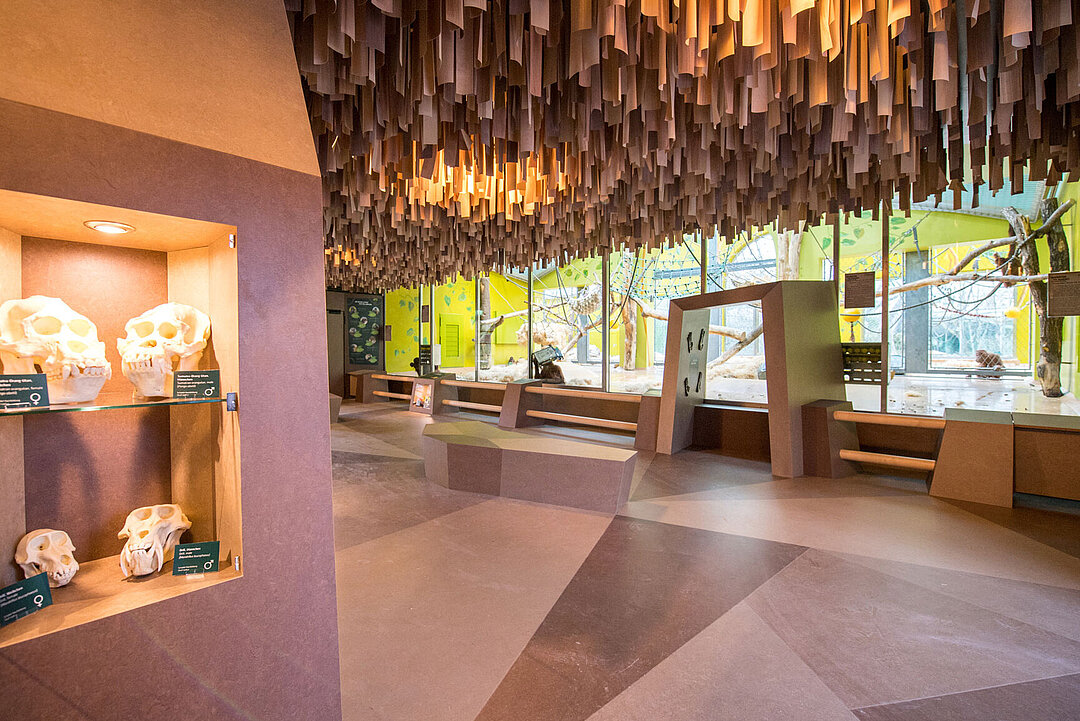
The Orangutan and Drill House reopens with a revamped visitor area. Improvements include a new educational display concept that provides more information about the two primate species and their endangerment due to habitat destruction and consumer choices.
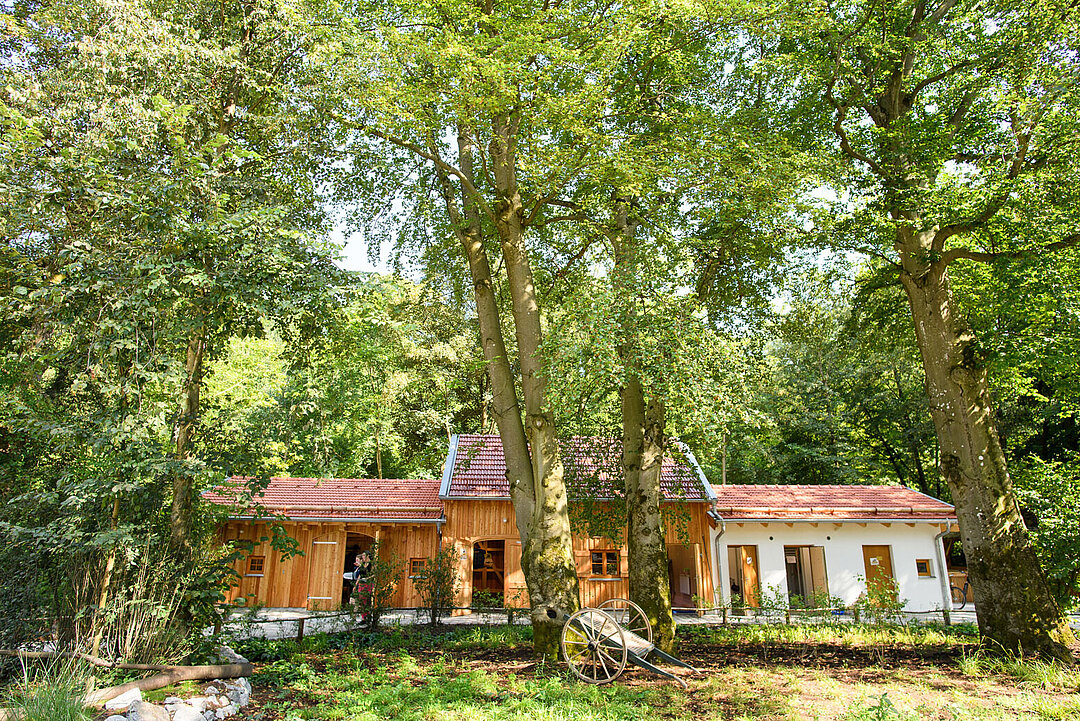
On 27 July 2018, the first construction phase of the Hellabrunn’s Mühlendorf (Mill Village) officially opens to the public. Upon completion, the new Bavarian village at the zoo will represent the heart of the next geographical zone scheduled in the Master Plan: Europe. The Mühlendorf will focus on regional biodiversity and educate visitors on local heritage and endangered breeds. Exciting interactive learning stations invite animal lovers to discover fascinating facts, such as how wild species evolved into domestic animals.
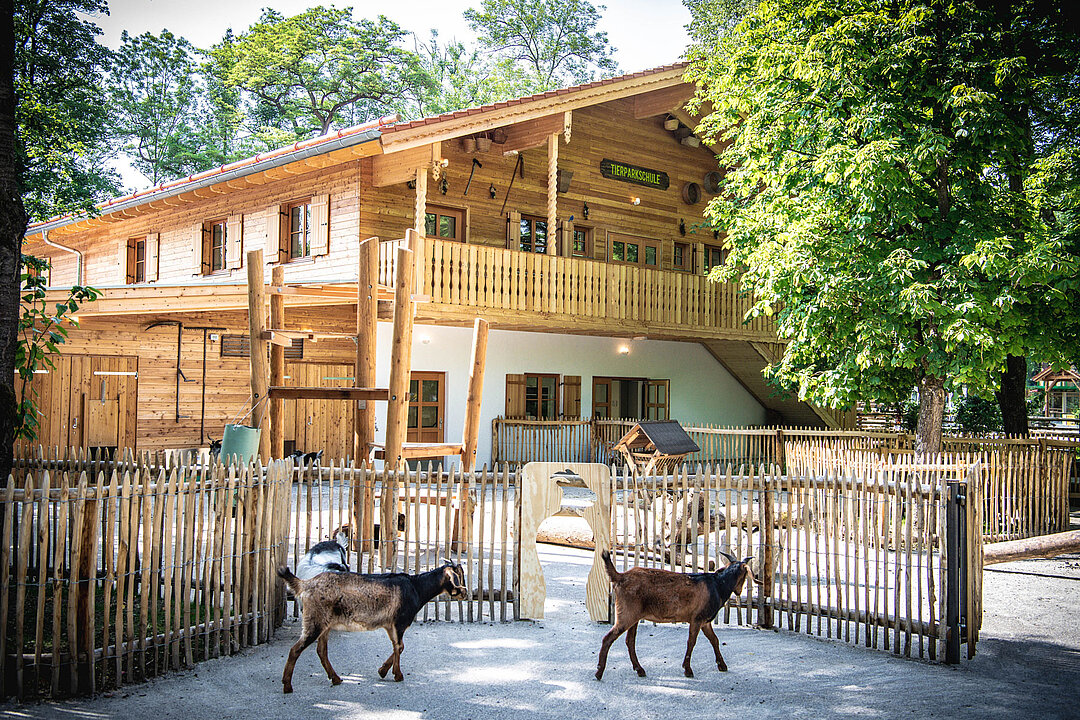
On 19 July 2019, the new Zoo School officially opened to the public, thus completing the second construction phase of the Mühlendorf village at Hellabrunn Zoo. The new Zoo School is an extra-curricular learning centre where Munich schoolchildren can learn about biodiversity through a wide range of hands-on experiences. In addition to the Zoo School, the Mühlendorf village also received new enclosures for the Dahomey dwarf cattle, Damara and Girgentana goats. The education programme was supplemented by the topics Insects and Local Biodiversity and Fascinating Facts about Wild and Honey Bees.
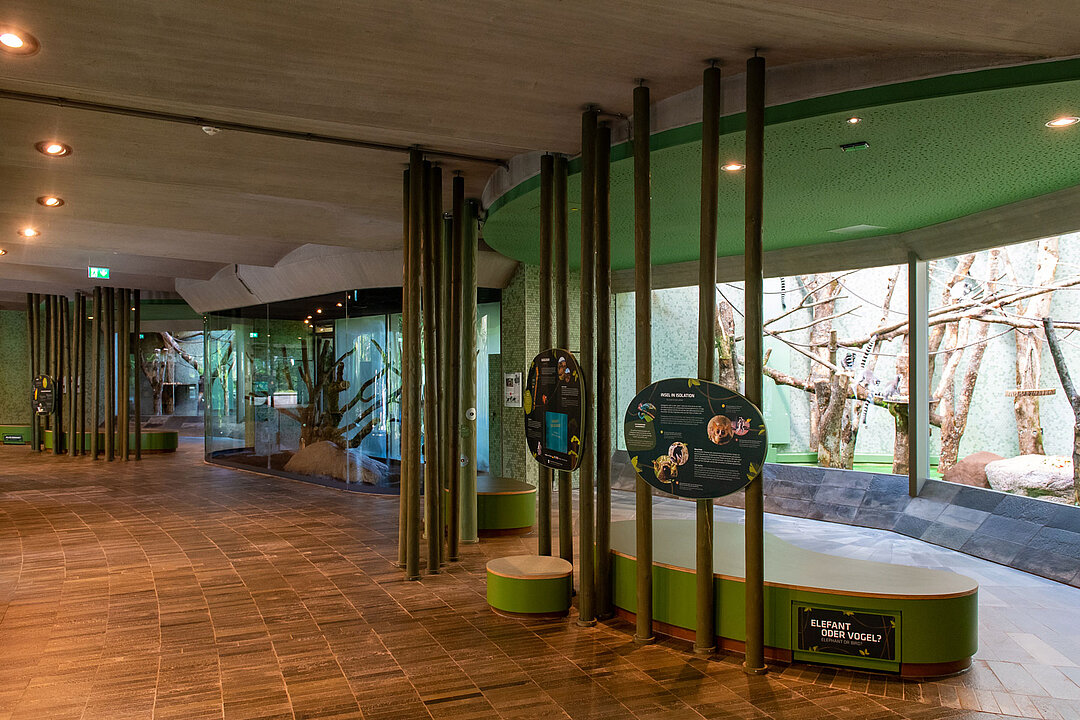
In 2020, the animal house for the small monkeys at Hellabrunn undergoes extensive renovation. The project includes upgrading the building’s technical installations, enlarging the enclosures and revamping the visitor area. In addition, interactive educational signs are installed for each of the endangered species.
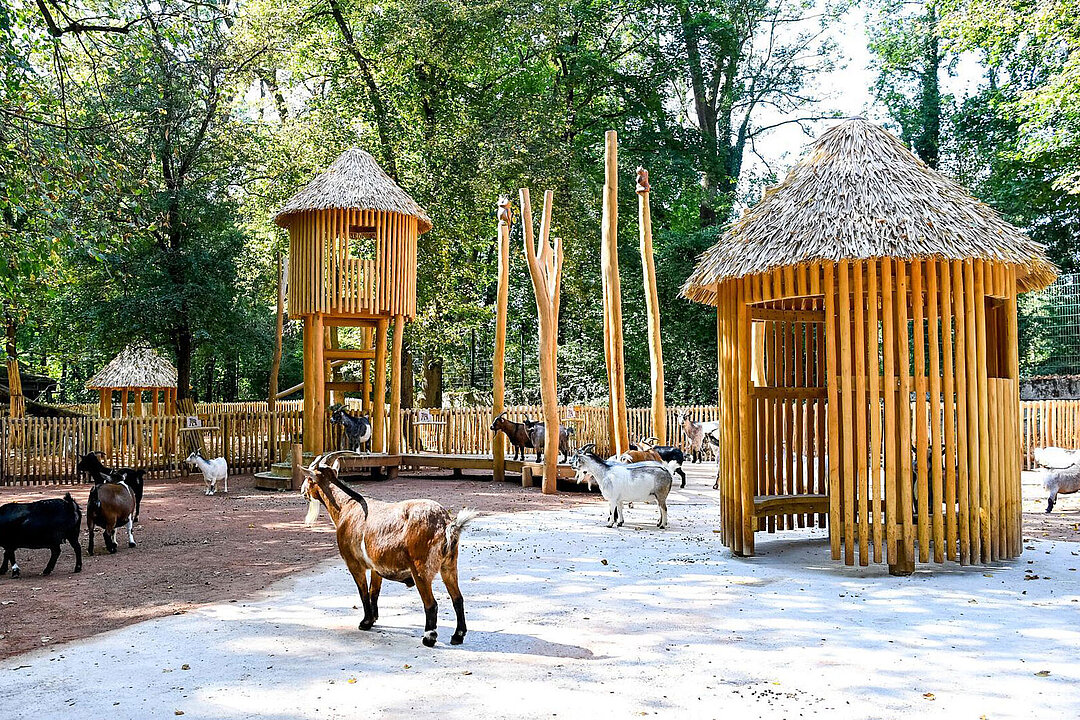
The revamped petting zoo at the Isar entrance opens. The project for this habitat, which is part of the Africa geozone, was sponsored by Förderkreis Hellabrunn (Hellabrunn Sponsor Circle).
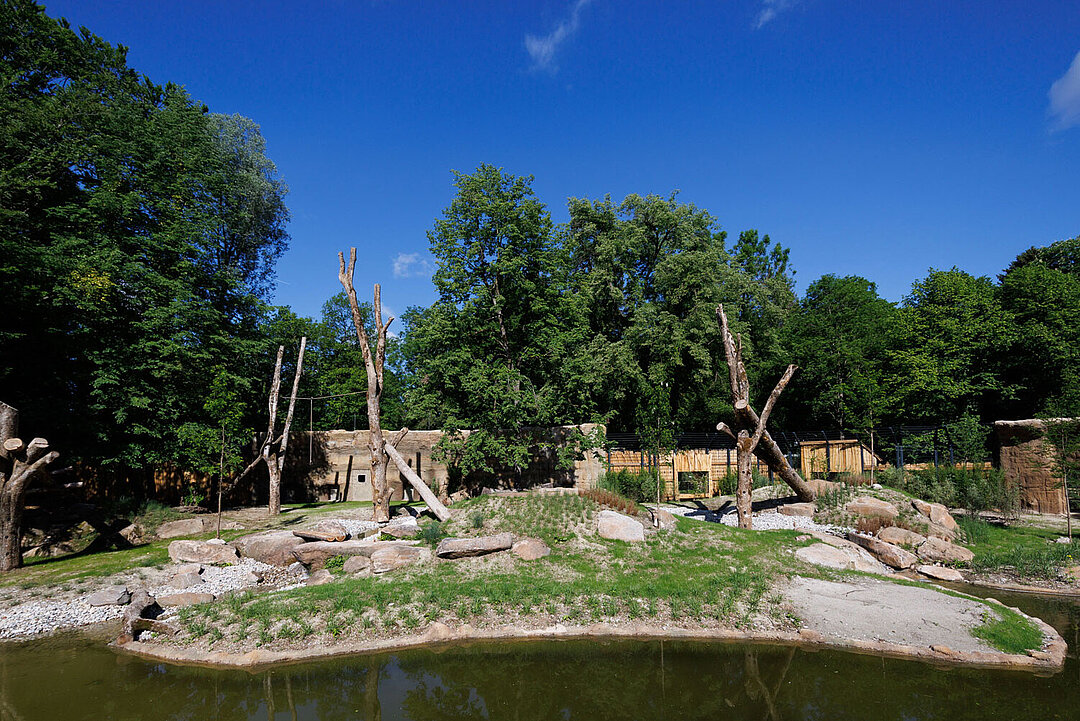
On 27 May 2022, Hellabrunn Zoo celebrates the opening of the new lion enclosure. The approximately 2,400m² habitat, designed to replicate the African savannah, meets all the requirements of modern big cat husbandry. In line with its educational concept for enclosures, the zoo also installs interactive animal signs that inform visitors about this iconic species, its habitat, but also the cultural context in Africa.
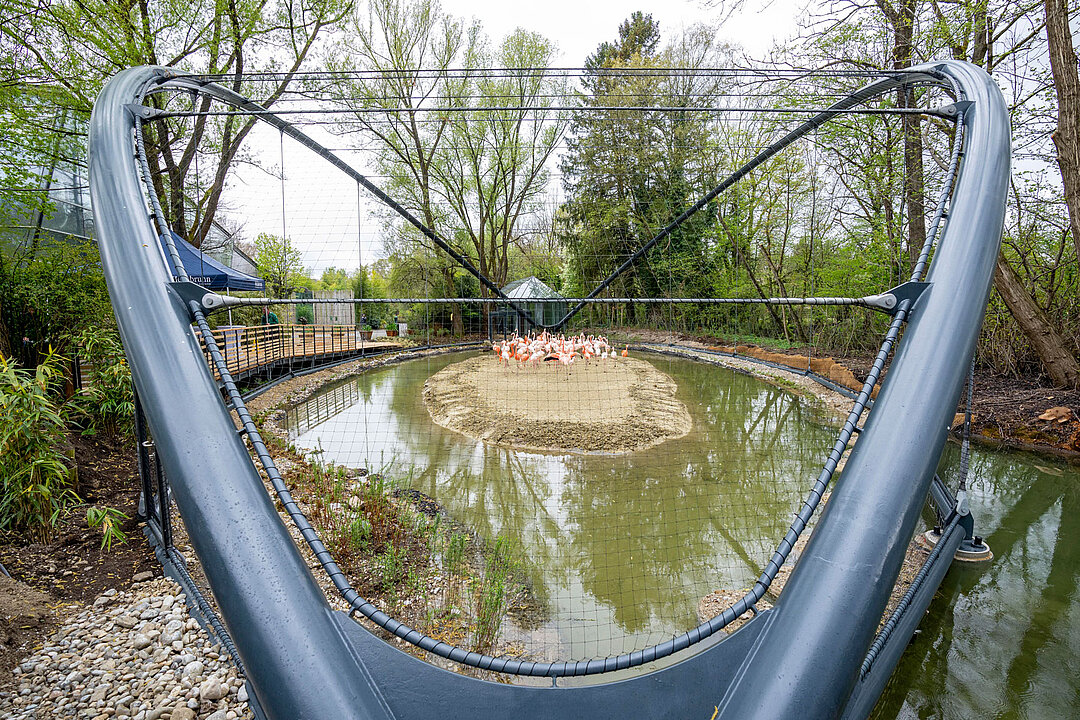
The flamingo enclosure undergoes a revamp during seven months of construction work, which includes installing a modern cover netting over the habitat. The netting design protects the delicate flamingos against predators and disease-carrying intruders and eliminates the need to clip their wings.
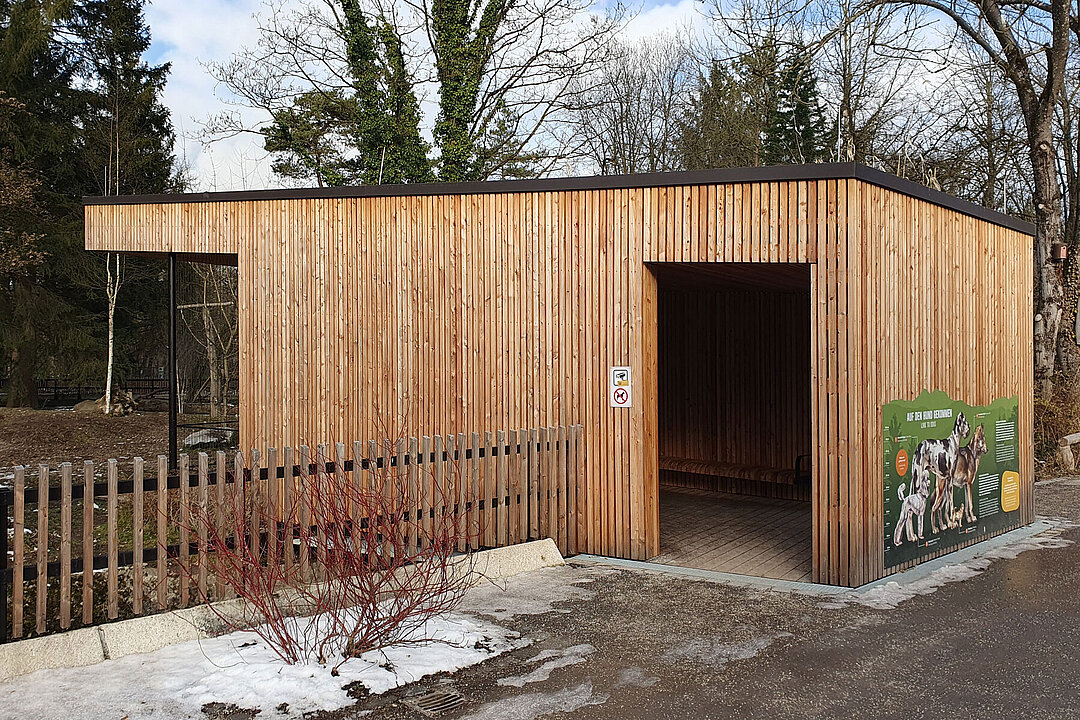
The wolf enclosure reopens after extensive renovation work. It features a new roofed platform that gives visitors the opportunity to observe the fascinating predators up close and learn more about the species via the barrier-free educational display.